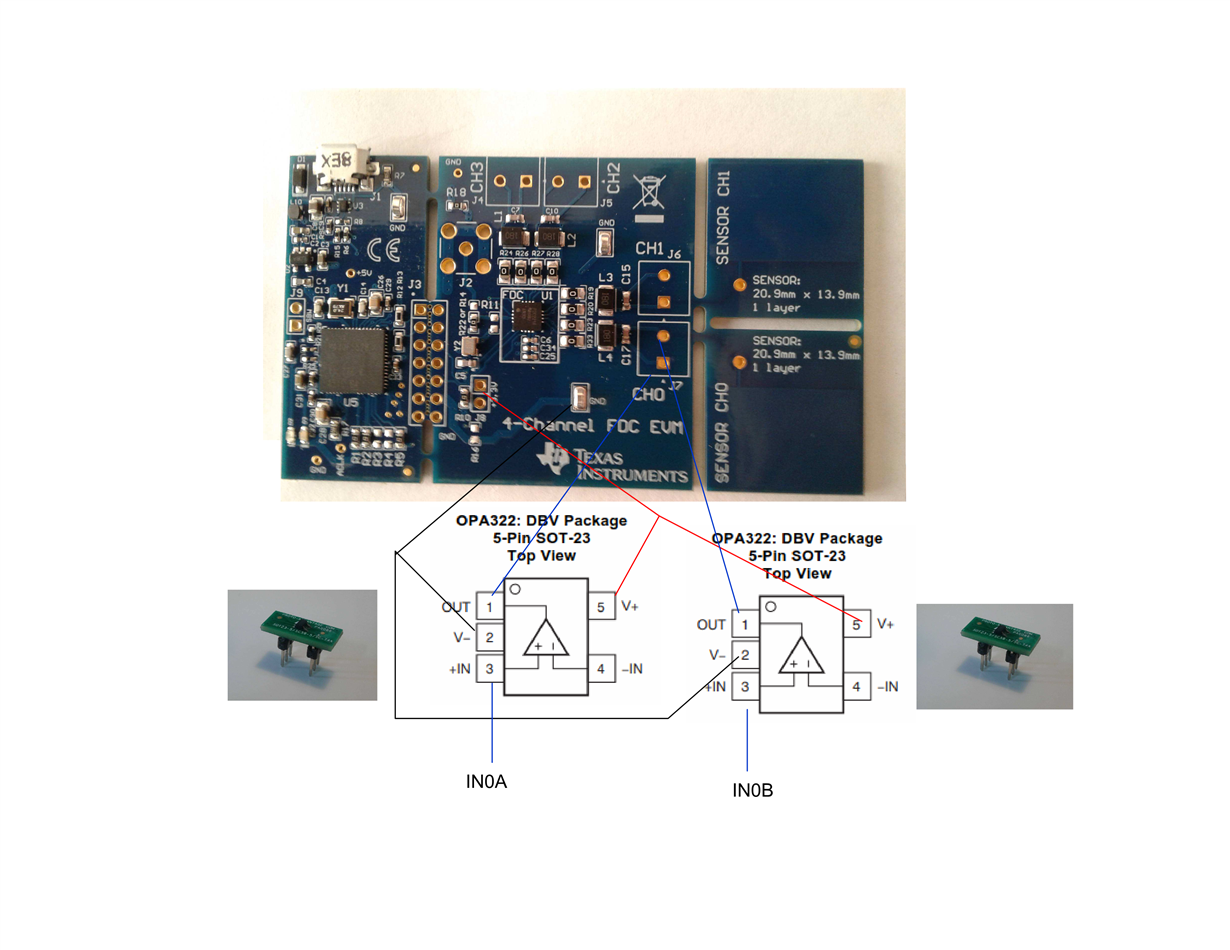Other Parts Discussed in Thread: OPA322, , FDC2214, FDC1004
Hi,
I am trying to use OPA322 as a signal conditioning or as an actively driven shield for FDC2214EVM's input, and have run into trouble. The overall frequency became over 40Mhz, which halted the channel's measurement/response.
The OPA was soldered on an adaptive board, https://www.digikey.ca/product-detail/en/PA0086/PA0086-ND/5014711/?itemSeq=293753807 for testing, attached is an illustration of my connection.
My differential sensor plates A and B, having capacitance 60-80 pF, are connected to PIN3 (+IN) of the OPA; The OPA's outputs (PIN1) are connected to the input channel 0 of the FDC, IN0A and IN0B; Power supply for the OPAs (PIN5, V+) is taken from the FDC's 3.3V at J8; PIN2 (V-) of the OPA is connected to a ground on the FDC board.
I also tried to use just one OPA for one sensor plate, the overall frequency dropped to 26-29MHz for different OPA322s, I tried 4 of the OPA322 separately, capacitance reading precision were worse than other channels using input deglitch filter 33MHz.
OPA322 is an amplifier with gain =1, it should not have such a big impact on input frequency.
Can someone help with the issue?
Regards,



